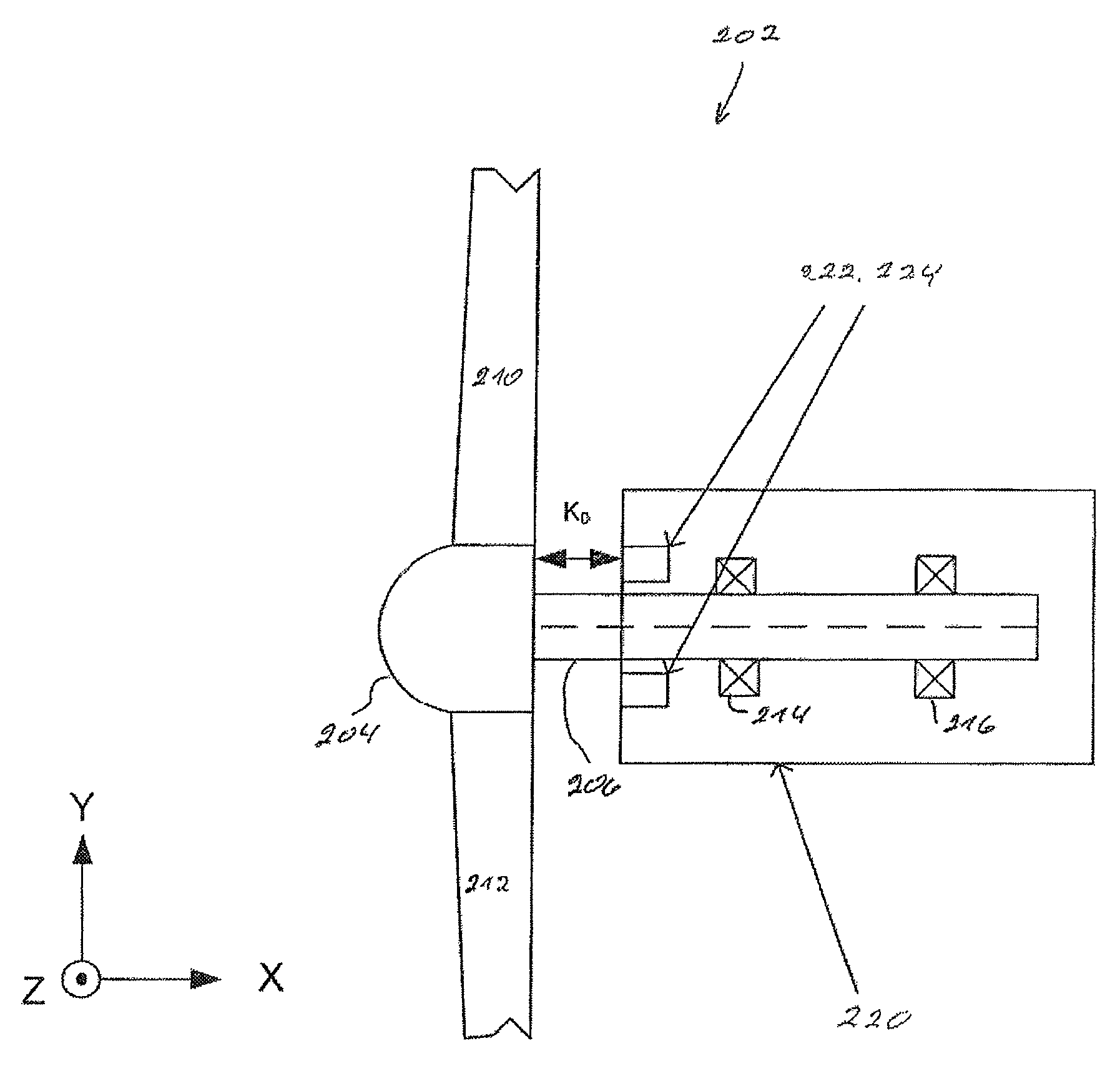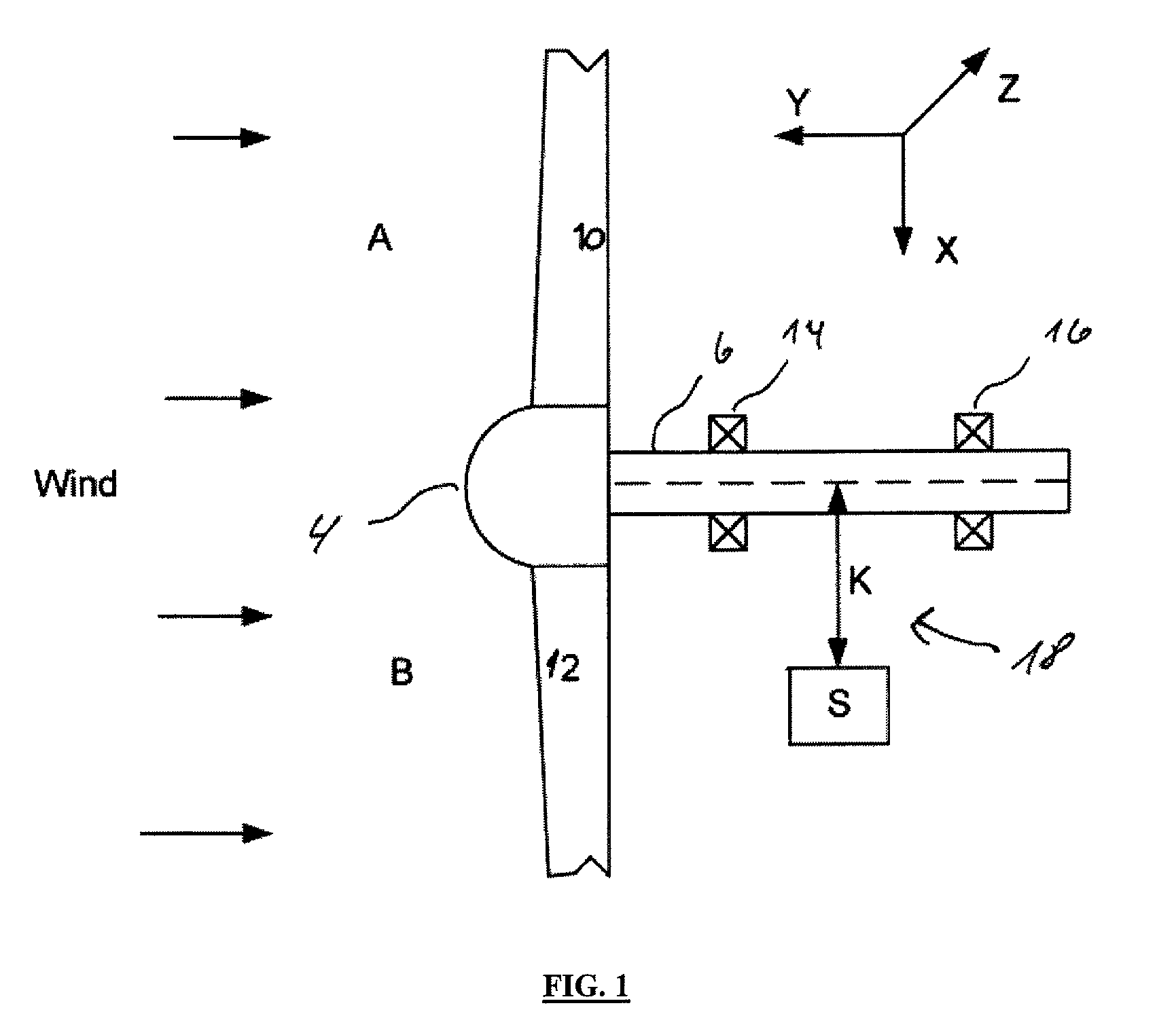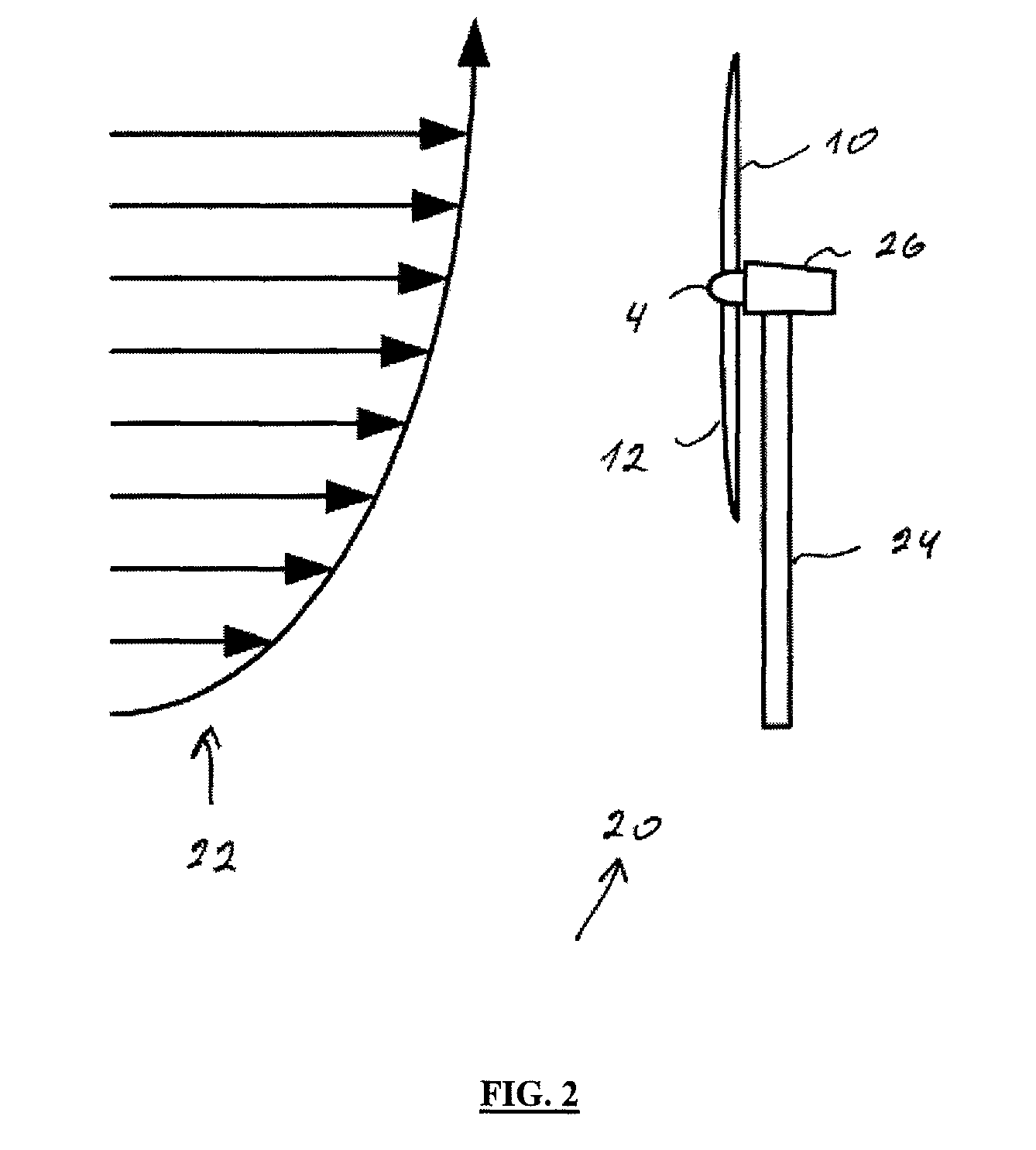Method and system for operating a wind turbine
a wind turbine and wind power technology, applied in the direction of rotors, marine propulsion, vessel construction, etc., can solve the problems of price, lifetime and reliability, and achieve the effect of increasing the power production of the wind turbine and reducing the wear at the shaft bearing
- Summary
- Abstract
- Description
- Claims
- Application Information
AI Technical Summary
Benefits of technology
Problems solved by technology
Method used
Image
Examples
Embodiment Construction
[0008]This can be achieved with a method as described in the preamble to claim 1 if the method is modified so that the load regulation system measures the actual rotor load by at least one displacement sensor, which displacement sensor is measuring the bending of the main shaft, where the load regulation system based on the shaft bending regulates the individual pitch of the blades for compensating asymmetric load at the rotor.
[0009]This can lead to an adjustment of the pitch of the blades. Where the load on the blades is minimum, the pitch angle is increased in order to achieve a higher load on the blade in order to adjust the asymmetric load to a minimum at the rotor. Further for the blade under high load, the pitch angle can be decreased for reducing the load. This adjustment into a symmetric load can by itself lead to an increasing power production. Due to the reduction of the bending on the shaft, the load on the bearings will also be reduced which can lead to an increasing lif...
PUM
 Login to View More
Login to View More Abstract
Description
Claims
Application Information
 Login to View More
Login to View More - R&D
- Intellectual Property
- Life Sciences
- Materials
- Tech Scout
- Unparalleled Data Quality
- Higher Quality Content
- 60% Fewer Hallucinations
Browse by: Latest US Patents, China's latest patents, Technical Efficacy Thesaurus, Application Domain, Technology Topic, Popular Technical Reports.
© 2025 PatSnap. All rights reserved.Legal|Privacy policy|Modern Slavery Act Transparency Statement|Sitemap|About US| Contact US: help@patsnap.com



